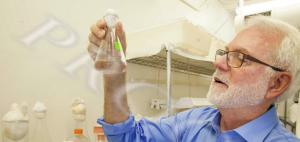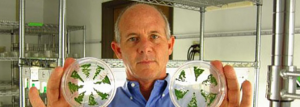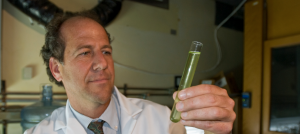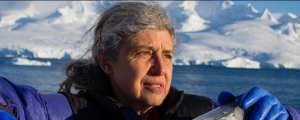Bio-inspired Design
Biomimetic surface coatings & polymers
Bioinspired design is the emerging field of using nature as the inspiration for innovative new materials and devices. Scripps researchers are on the cutting edge of developing new technologies for surface coatings and polymers. Scripps scientists have developed surface coatings for reduced biofouling that are made of more resistant materials to wear in natural, harsh conditions. This in turn leads to a reduced environmental impact from the current anti-biofouling methods.
PI: Dimitri Deheyn
Bioluminescence, Structural Color, and Biophotonic Materials
Nature has developed multiple, innovative ways to produce light, and Scripps scientists are studying these unique methods to harness their power for human use. For example, natural light generating molecules indicating stimulation/stress in nature can be engineered to dynamically change for a desired light response. Scripps researchers are elucidating the biochemical pathways that lead to the production of melanins—compounds that efficiently absorb ultraviolet light and protect skin cells in humans—and gain a better understanding of the chemistry and morphology of melanin polymers at the molecular scale. Scripps scientists also study the structures and elements critical for structural coloration in organisms. Understanding the nanostructure design of surfaces can lead to deliberate coloration, changing coloration, and vibrant underwater coloration that does not require pigmentation, which can lead to bleaching, loss of color, transfer of color to environment.
PI: Dimitri Deheyn
Light protective & enhancing molecules & materials
Dimitri Deheyn and collaborators are elucidating the biochemical pathways that lead to the production of melanins in a range of organisms—compounds that efficiently absorb ultraviolet light and protect skin cells in humans—and gain a better understanding of the chemistry and morphology of melanin polymers at the molecular scale, nanoscale, micrometer and at the macroscale.
Dimitri Deheyn and collaborators studied a species of “clusterwink snail” known to produce light. The researchers discovered that rather than emitting a focused beam of light, the animal uses its shell to scatter and spread bright green bioluminescent light in all directions. The clusterwink shell in visible light is opaque, yellowish, and otherwise thought to stifle light transmission. However, the shell acts as a mechanism to specifically disperse only that particular color of light produced by the snail’s body and appears to have improved properties for light diffusion beyond commercial reference materials.
PI: Dimitri Deheyn
Work with Scripps
- Access leading scientists in bio-inspired design, algae technologies, and biomimicry
- Design collaborative research
- Get a seat at the table for the latest scientific updates
- Learn how to implement newest expertise & methods
- Work with talented Scripps students and postdocs as potential hires
Selection of Centers & Resources
Centers for Marine Biotechnology and Biomedicine

Dr. Dimitri Deheyn, Researcher
Scripps Institution of Oceanography

Dr. William Gerwick, Professor
Scripps Institution of Oceanography
Skaggs School of Pharmacy & Pharmaceutical Sciences

Dr. Stephen Mayfield, Professor
Biological Sciences
Director, California Center for Algae Biotechnology

Dr. B. Greg Mitchell, Research Biologist
Scripps Institution of Oceanography

Scripps Institution of Oceanography
